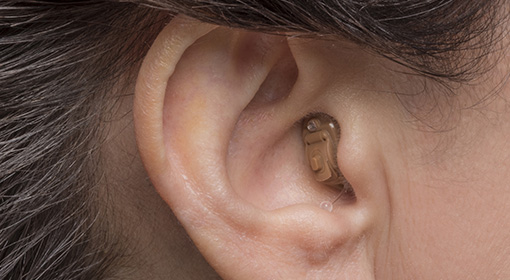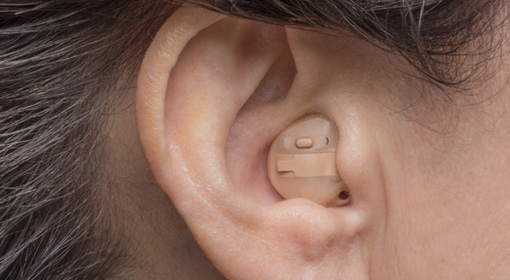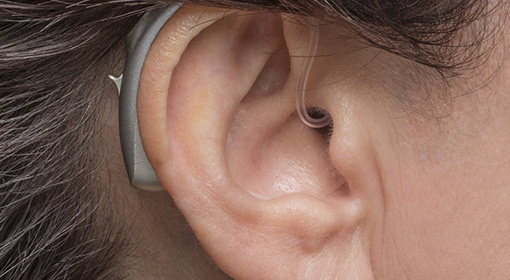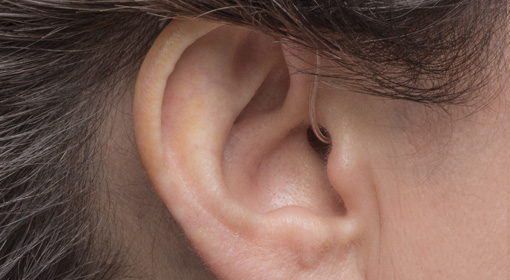What kind of hearing aids would work best for me?
A hearing aid is an electronic device, small in size,
Hearing Products
Hearing aids are considered investments. Think of them as devices that will not only help you live a better quality of life but will also be your partner as you go about your daily activities. Hence, choosing the correct hearing aid suited to your hearing requirements is a must. By being familiar with various hearing aid styles, hearing aid selection will be easier for you and your audiologist.
Hearing aids vary in styles, functions, powers, price, and size. Below are the common hearing aid styles:

CIC hearing aids are molded to fit the inside of the ear canal. It is ideal for people with mild to moderate hearing loss.
CIC hearing aids are:

ITC hearing aids are custom-molded and designed to fit partly in the ear canal. This hearing aid style can address mild to moderate hearing loss. In-the-canal hearing aids are less visible in the ear than larger styles.

In-the-ear hearing aids are custom-made and available in two styles – full shell and half shell. Full shell ITE hearing aids fill the bowl-shaped area of the outer ear while half-shell ITE hearing aids only fill the lower part.
Both ITE hearing aid styles are recommended for patients with mild to severe hearing loss.
In-the-ear hearing aids may offer features that are not available in smaller types of hearing aids. Due to its size, ITE hearing aids may be easier to handle and can accommodate a longer battery life. This type of hearing aid is also more visible than its smaller counterparts.

Behind-the-ear hearing aids hook over the top of the ear and rest behind the ear. There’s a small tube that connects the hearing aid to a custom earpiece called an ear mold.
Among all the hearing aid styles, BTE hearing aids are versatile and usually recommended for people of all ages and for any type of hearing loss.
Traditionally, behind-the-ear hearing aids are the largest type of hearing aid but thanks to innovations in technology, BTE hearing aids are now available in smaller designs that can compete with smaller, discreet devices.

Receiver-in-canal and receiver-in-the-ear hearing aid styles are similar to BTE hearing aids where the speaker or receiver is positioned inside the ear canal. A tiny wire connects the earpiece behind the ear to the receiver or speaker. This type of hearing aid is ideal for patients who want a less visible behind-the-ear option.
Open-fit hearing aids are another variation of behind-the-ear hearing aids. This style of hearing aid keeps the ear canal open, allowing low-frequency sounds to come through the ear naturally.
Meanwhile, high-frequency sounds are amplified through the hearing aid. This style is recommended for patients with low-frequency hearing and mild to moderate high-frequency hearing loss.
Bluetooth hearing aids allow wireless connectivity with Bluetooth-compatible devices including smartphones, computers, laptops, TVs, music players, and other electronics. With Bluetooth, audio can be streamed directly to hearing aids.
Below are some of the things that Bluetooth hearing aids can offer that traditional hearing aids don’t:
Aside from hearing aid styles, hearing solutions also vary in technology. These small devices can be truly powerful and some can even last for days without needing to be charged.
Basically, hearing aid technology is categorized as basic, standard, advanced, and premium. When choosing a hearing aid, the technology levels also need to be considered. This will depend on the degree of your hearing loss, lifestyle, and budget.
What are hearing aids with digital signal processing?
Digital signal processing (DSP) is a type of hearing aid that picks up sounds entering through the microphone and converts them into digitized codes. DSP is a technology that regularly analyzes sound to make it audible for the brain to interpret.
Personal sound amplification products (PSAPs) are readily available in retail stores and online. Some consumers may refer to them as “over-the-counter” hearing aids but in reality, they are far more sub-standard than prescription hearing aids.
PSAPs are primarily designed to amplify all sounds within a given radius, including noise and other unnecessary sounds. For a person with hearing loss, this could actually do more harm than good.
Hearing aids, on the other hand, are equipped with broadband technology that smartly filters sounds, amplifying only the relevant audio while reducing feedback and background noise. Hearing aids can also be adjusted based on a patient’s exact hearing requirements, resulting in a pleasant listening experience.
If you are concerned about your hearing health, we highly suggest that you consult with an audiologist first before purchasing any hearing aid or amplification device. Getting a hearing aid is not like shopping for a smartwatch; it’s more like getting a pair of reading glasses that need an evaluation in order for you to get the most out of the item.
No hearing loss is alike. Just like fingerprints, their hearing loss is unique and varies depending on the type and degree of hearing loss. The same goes for hearing aids – the existing types of hearing aids vary depending on hearing aid technology, functionality, and power.
The best way to determine which among the various hearing aid styles is the most appropriate for you is to consult with an audiologist.
Our team at Fort Bend Hearing can assess your hearing and recommend which type of hearing aid will best suit your hearing requirements and lifestyle. We are authorized hearing aid providers of major hearing aid brands including Phonak, Widex, ReSound, Lyric, and Oticon.
Contact us today to schedule an appointment!
Are you ready to hear better?
Fort Bend Hearing provides comprehensive preventative, diagnostic and rehabilitation hearing services for pediatric and adult patients. Contact us today to schedule your appointment.
A hearing aid is an electronic device, small in size,
Hearing aids are an essential tool for hearing loss since
The goal of a diagnostic hearing evaluation is to establish
Are you ready to hear better?
Fort Bend Hearing provides comprehensive preventative, diagnostic and rehabilitation hearing services for pediatric and adult patients. Contact us today to schedule your appointment.
Learn more about how we can help.